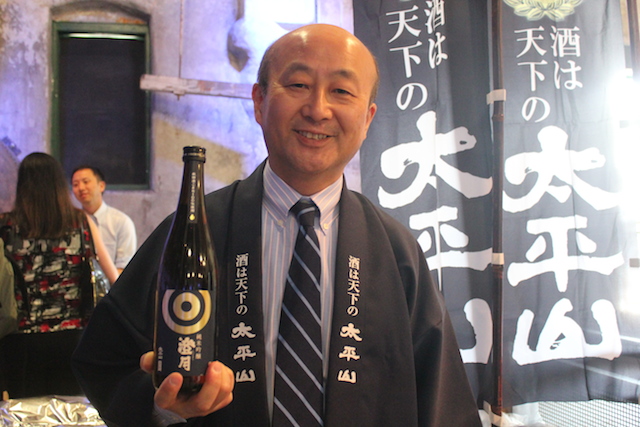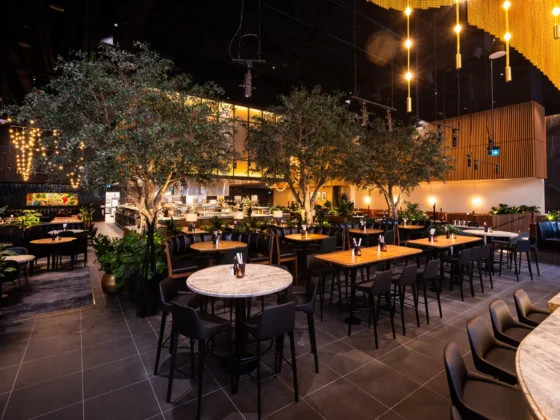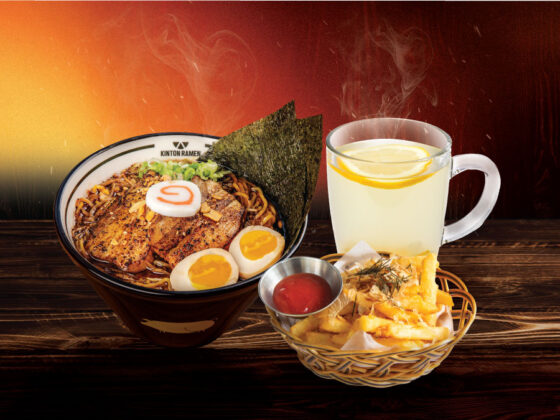Kampai Toronto’s third annual Festival of Sake took place this past Thursday at the Fermenting Cellar in the Distillery District. Under the hue of blue lights and the industrial backdrop of the historic building, Canada’s largest sake festival played host to 150 different types of sake from Japan, Canada, and the USA.
“Kampai Toronto is about more than just sharing our love for the Japanese beverage,” says President of The Sake Institute of Ontario (SIO), Vivian Hatherell. “The message of education is at the forefront of this festival – we’re encouraging people to learn about the history of the beverage, its regional intricacies, and how it can be paired along with a variety of international cuisines.”
ADVERTISEMENT |
Sake carries a great deal of history. It’s been brewed for over 2,000 years, stemming from rice cultivation techniques along China’s Yangtze River. Many equate sake to a spirit, however sake is actually a brewed beverage made from rice, water, yeast, and koji-kin, which aids in the fermentation process and breaks down rice starch into sugar.
Amidst the sipping and sampling, the collection of international vendors included brew masters and brewery owners, many of whom come from a long lineage of sake producers.
“Sake is a story within itself,” remarks Eiko Kodama, standing beside her husband, of Kodama Brewing Co. in Akita, Japan. “Each brewery, each family has a unique history and this is the perfect forum to learn about where we each come from.”
She proceeds to show me photos of her husband’s 150-year-old family home – a guesthouse they now use to house visitors of their brewery in northern Japan. The Kodama family originally produced soy sauce and miso, and is celebrating their 101st anniversary brewing sake this year. Their Taiheizan Chogetsu was awarded the Gold Award at SIO’s 2014 International Sake Challenge in the Junmai Ginjo category earlier this month.
ADVERTISEMENT |
The various grades of sake are determined by the percentage of rice fibre that’s milled (polished off) from the grain itself. The average atsukan (hot sake) that you’ve been shooting down at the sushi restaurant is futsu or honjozo grade – either no milling constraints or up to a minimum of 70% with some brewer’s alcohol added. Daiginjo (super premium) grade sake must be milled down to less than 50%; some I sampled were under the 30% mark.
Sake can also be pasteurized or unpasteurized, the former being most common. The Ontario Spring Water Sake Company brews a number of unpasteurized junmai (undiluted) sake under their Izumi brand right here in Toronto’s Distillery District.
“Because it’s a fresh beverage, more sake is produced outside of Japan,” remarks Ontario Spring Water Sake Company President Ken Valvur. “Given the low shelf life of unpasteurized sake, the demand is also a reflection of the drive for locality.
“Canada isn’t the only country making waves in this industry. There are also breweries in Australia, Peru, the US, South Korea, and Norway.”
ADVERTISEMENT |
Those interested in learning more about the quintessential Japanese beverage don’t just have Kampai Toronto. Tours of the Izumi Brewery run Thursdays, Saturdays and Sundays, and an ever-expanding list of restaurants, from the comprehensive offerings at Ki Modern Japanese to Italian trattorias, are serving the stuff. So, toast to the historic hooch, and expand your epicurean horizons next time you’re at the LCBO. Wine’s not the only thing that goes well with your dinner…
Did you attend Kampai Toronto? Let us know in the comments below or tweet us @ViewTheVibe.
ADVERTISEMENT |








